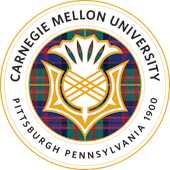Kai Gutschow is a historian of modern architecture interested in the intersection of history, theory, and practice. He is a Co-Director of the CMU SoA’s design-based graduate programs, founder and Track Chair for CMU’s M.Arch program, a coordinator of the year long B.Arch Thesis program at CMU, as well as 1st year studios. Gutschow has a PhD from Columbia University, an M.Arch from U.C. Berkeley, and a B.A. from Swarthmore College.
Gutschow’s primary field of research has been the complex and controversial history of modern German architectural culture, especially the role that architectural criticism, theory, and media culture played in influencing professional and cultural developments. He has finished a book manuscript titled “Inventing Expressionism: Art, Criticism, and the Rise of Modern Architecture,” an intellectual history of the origins of Expressionism in German architecture from 1905-1925. It argues that Expressionist architecture arose not primarily out of a revolutionary political moment that followed World War I in Berlin, as is often maintained, but rather out of a widespread and continuous evolution of ideas on the role of “expression” in modern architecture from the late nineteenth century to the mid-1920s. He is also working on an edited volume of essays discussing the rich history and impact of expressive and expressionist sensibilities in architectural history. In addition to his book projects, he has lectured on and published refereed journal articles and book chapters on a variety of related topics, including the work of the German architectural critic Adolf Behne, on Bruno Taut’s iconoclastic “Glashaus” as “Installation Art,” on the East African colonial architecture of the German modernist Ernst May, on the modernity of the conservative critic Paul Schultze-Naumburg, and on the German patriotism and Jewish heritage of the German critic Walter Curt Behrendt. His most recent project is a larger history of postwar architecture in Pittsburgh.
Gutschow has combined this original historical research with a leadership role in promoting the importance of history, theory, and research in the design programs at CMU. His goal has been to bring together distinct yet related visions of architecture – history, theory, research, and design – into an integrated pedagogy and career path. His training in art history, cabinetmaking, architectural design, and architectural history over the years reflects an effort to synthesize what are often seen to be disparate areas of architecture. Both his scholarship and teaching have emphasized architecture’s unique dependence on its own past, and on the evolution of architectural ideas and design strategies from the past into the future. Only through rigorous research and engaging the past critically, by using the past as a design tool, can we ensure that architecture has a solid foundation and makes an original contribution to our field, especially when the architectural profession is facing profound challenges and the education of architects is undergoing radical changes, as it is today.
Experience
-
–presentAssociate Professor of Architecture, Carnegie Mellon University
- Pittsburgh, Pennsylvania, U.S.
- Article Feed
- ORCID
- Joined


